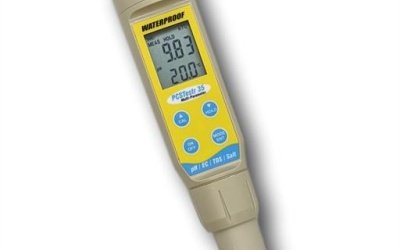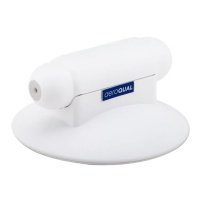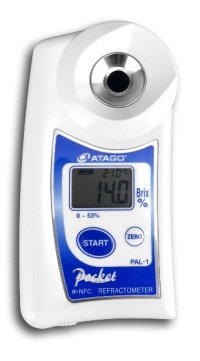Caring for your EC-PCSTestr35

Adequate care and maintenance are crucial for accurate results, satisfactory performance, and prolonging the life of your EC-PCSTestr35 Multi-Purpose Meter. Instrument Choice Scientists have assembled the essential maintenance tips for this device in an easy-to-follow Maintenance Guide.
Calibration
Calibration is a critical step to ensuring your EC-PCSTestr35 is performing to its designed level of accuracy. Calibration should be performed at regular intervals, when a meter is giving inaccurate results, or after replacing an electrode.
- Follow the step by step calibration guide here.
- Calibrate pH to a minimum of two points. Use two buffers that shoulder your expected pH result.
- Calibrate Conductivity, TDS, or Salinity.
- Temperature Calibration. You should not need to calibrate temperature on this meter as the factory temperature calibration should last for the life of the original sensor. It may also be desirable to adjust the temperature to match a certified accurate thermometer or another Tester. The temperature value is common to all parameters, so only one calibration is needed.
Electrode Maintenance
Always keep the sensor electrodes clean. Soiled electrodes will have a compromised ability to obtain accurate measurements.
- After each use, rinse the electrode with de-ionised water and store the protective cap.
- If you are experiencing reduced performance or the electrode is particularly soiled, a deep clean may be necessary. Soak the electrode in some electrode cleaning solution and rinse with deionised water before use. Watch a scientist from Instrument Choice use electrode cleaning solution in the video below.
Video 1: Watch an Instrument Choice Scientist demonstrate how to use electrode cleaning solution here.
Electrode Storage
Storing the electrode within a protective cap is necessary to keep it safe and clean when not in use.
- Always store the clean, dry electrode in the included electrode cap. The sensor can easily be re-hydrated by soaking in warm tap water or pH buffer for 10 minutes if stored dry.
Batteries
Maintaining an adequate source of power is fundamental to ensuring continuously accurate measurements. The EC-PCSTestr35 has a battery indicator on the LCD screen; see the low battery indicator table below. When the low battery indicator starts blinking, replace the four 1.5V A76 or LR44 1.5V alkaline batteries.

- Open the battery compartment lid, remove the old batteries by pulling the plastic ribbon, and replace it with new batteries. Observe the polarity when inserting your new batteries.
Electrode Replacement
You will need to change the electrode module whenever your tester fails to calibrate or gives inconsistent or fluctuating readings in calibration standards. We recommend you replace the electrode module at a fraction of the price of a new tester by following the steps below:
- Purchase replacement electrode. Click here to view product.
- Twist off the ribbed collar above the electrode. Set aside the collar and O-Ring.
- Unplug and discard the old electrode
- Gently plug in the new electrode by aligning the tabs on the electrode. Push the O-ring from the old electrode back onto the new electrode module.
- Push the ribbed collar back onto the electrode and twist until tight.
- Recalibrate the meter with the new electrode prior to taking measurements.
Video 2: Watch an Instrument Choice Scientist replace the electrode on the EC-PCSTestr35 here.
Conclusion
Caring for your EC-PCSTestr35 will prolong its operating life and give you consistent and accurate results for many years.
Of course, if you have any questions or need help with any of the maintenance steps listed above, contact one of our Instrument Choice Scientists, we're here to help! Call 1300 737 871 or email [email protected].
Also interesting
Carbon monoxide is an odourless, colourless, tasteless gas that can have adverse effects on the human body if it accumulates to dangerous levels. Common carbon monoxide producing items within the home include catalytic heaters, fireplaces, and various gas burning appliances such as gas heaters.
Get informed about carbon monoxide, its effects on the human body, and the preventative measures you can take in the home to reduce the risk to you and your family.

Brix Refractometers measure the sucrose concentration within a sample or solution. They are used widely in the food industry for testing fruits, vegetables, wine, beer, jams, jellies, and more. In many cases, Brix results will have a huge impact on the quality, taste and nutritional value of the food products, which makes it vital to obtain accurate results.
(And did you know that temperature has an impact on the accuracy of Brix percentage results?)

